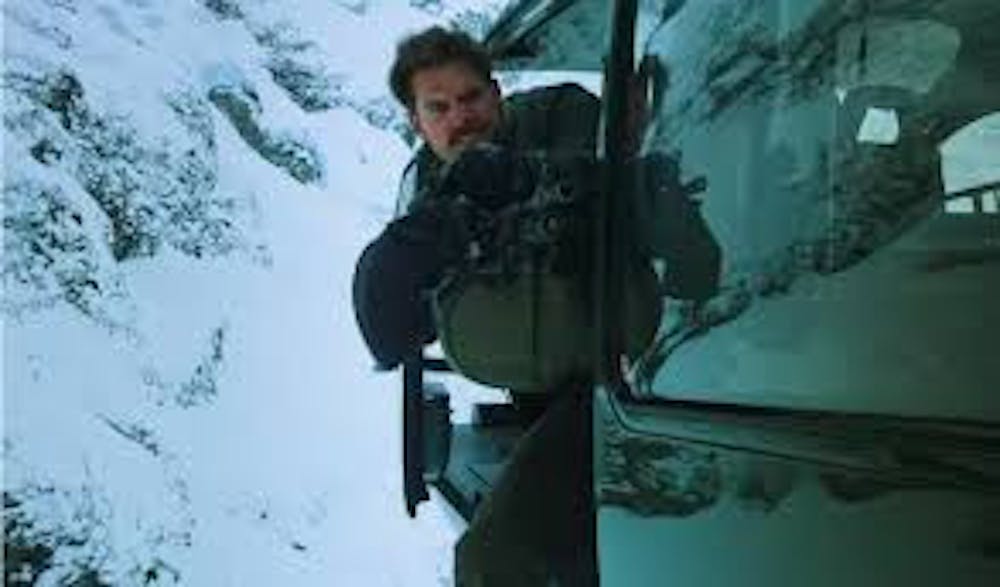By Gabriella Gerace
Staff Writer
Action as a movie genre somehow exists within a dichotomy that is both obviously simple and incredibly difficult. It seems that a formula has existed for as long as viewers can remember: a seemingly indestructible main lead, a sinister villain, plenty of explosions, grandiose locations and said lead travelling by every mode of transportation possible to complete his mission. Incorporating this checklist is easy, but doing so tastefully and in a fresh way is where many films fall short.
“Mission Impossible: Fallout” manages to exist as a new action film that looks and feels modern, while including all the overboard action fans crave. “Fallout” is the second “Mission Impossible” film to be directed and written by Christopher McQuarrie, and is the sixth installment in the “Mission Impossible” series starring Tom Cruise as Impossible Missions Force leader and agent Ethan Hunt.
“Fallout” follows Hunt two years after his nemesis and villain Solomon Lane (Sean Harris) is captured. Lane’s terrorist organization has continued wreaking havoc globally without his leadership, and Hunt and his team must keep three plutonium cores used to create nuclear bombs from their possession.
During the mission, Hunt is travelling with his usual team members and close friends, Luther Stickell (Ving Rhames), Benji Dunn (Simon Pegg) and Ilsa Faust (Rebecca Ferguson) across various locations including Berlin, Paris and their final location, Kashmir. All the actors depicting the members of the IMF share a great chemistry. Scenes that are dealing with heavy plot points and realistic tragedies are made easier to digest by witty dialogue, and the actors ability to portray the IMF as both colleagues and friends.
This dynamic is tested over the course of the film by the addition of a CIA assassin, August Walker, who is appointed by CIA Director Erica Sloane (Angela Bassett). Walker is then specifically instructed to watch Agent Hunt.
Cruise and Cavill make a great rivaling duo both in their own scenes, and those shared with the rest of the IMF team. As they engage in almost every type of physical task possible, Cavill's large and intimidating build is juxtaposed by Cruise’s smaller stature. These interactions make for edge-of-seat action scenes during both moments of teamwork and disagreement alike.
As “Fallout” progresses, Hunt engages in his usual tasks and life threatening situations alike, all of which are mind boggling to watch on screen. These finely crafted action scenes are even more impressive when taking into consideration that Tom Cruise continues to perform all of his own stunts, just as in previous Mission Impossible installments.
Many of these scenes are increasingly intense due to the already outrageous nature of the stunts, including long winding motorcycle sequences and high altitude parachuting, but are actually heightened by the looming presence of Walker. Hunt is not only tasked with essentially saving the world, but with doing so while Walker is suspiciously competitive and overbearing to Hunt’s decisions along the way.
Overall, “Mission Impossible: Fallout” is an energetic and explosive turning point in the “Mission Impossible” series. Audiences do not need to see earlier movies or be an action film enthusiast to enjoy it — “Fallout” manages to create a balance of tensions that makes viewing deeper than just action for the sake of action.







